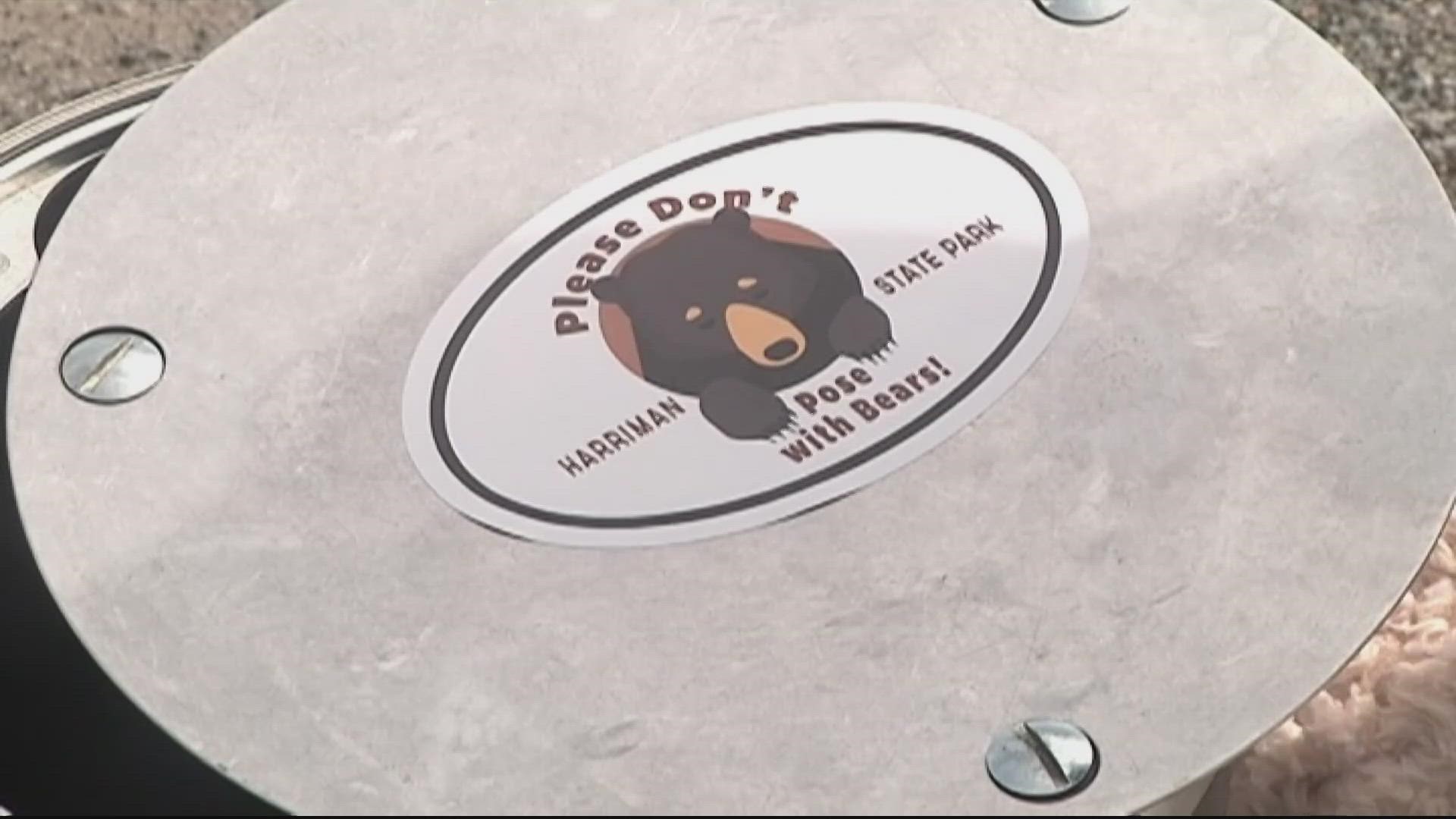WASHINGTON — As the warmer weather returns, bears will also come out of hibernation, making it common for you to encounter one in the wild. And, if you so happened to run into one, officials say there's one thing you should "never" do, that is "push a slower friend down" so that you can get away.
The National Park Service shared some advice on Tuesday, saying that you should refrain from pushing down someone slower "even if you feel the friendship has run its course."
"If not friend, why friend shaped? What about your other friend? Seeing a bear in the wild is a special treat for any visitor to a national park," the agency said. "While it is an exciting moment, it is important to remember that bears in national parks are wild and can be dangerous."
Instead of trying to serve your friend - or former one - up as bait, the park service said that there are several other methods you can take to help you and your friend to escape from the bear safely.
Bear may seem harmless and cute but it's important to know that they are, in fact, wild animals, and "their behavior is sometimes unpredictable," NPS said. Bear attacks are "rare," but they do occur, inflicting serious injuries and death.
"Most bear encounters end without injury," the agency said. "Following some basic guidelines may help to lessen the threat of danger. Your safety can depend on your ability to calm the bear."
Viewing etiquette is the first step to avoid an encounter with a bear that could escalate to an attack, the agency says.
Keeping your distance and not surprising bears are some of the most important actions you can do. Most bears will avoid humans if they hear them coming," NPS said, adding that you could pay attention to your surroundings and "make a special effort" to be noticeable if you are in an area with known bear activity or a good food source, such as berry bushes.
How to handle a bear encounter
There are some general tips to follow if you encounter a bear when you're out in the wild. If you do so, here's what the agency recommends:
- Talk calmly to the bear, stand your ground, and slowly wave your arms to identify yourself that you are a human
- Remain calm and talk to the bear in "low tones" that are non-threatening. A scream or sudden movements may trigger an attack.
- If you have small children with you, pick them up immediately.
- Hike and travel in groups as bears often become aware of groups of people and can get intimidated
- Carry EPA-approved peppery spray that can be used to stop aggressive bears.
The Park Service also offers some suggestions of what not to do:
- Do not give the bear food
- Do not drop your bag or pack
- Don't turn your back on the bear or run, so you can keep an eye on the bear and avoid tripping
- Don't climb a tree because grizzlies and black bears can climb too
- Never put yourself between a mother bear and her curb or try to approach them because the mother will likely attack you if she considers you a threat
If a brown and grizzly bear attack, the most important tip the agency offers is to make sure you leave your bag on and play dead. Fighting back usually increases the intensity of such attacks. Do not play dead when you are facing a black bear. The agency suggests escaping to a secure place.
Overall, the agency has repeatedly warned, it's important to make sure you plan ahead, make sure you are aware of your surrounding while hitting, and if you do see a bear remember you are a visitor in their home.
Follow digital journalist Chioma-Emilia Ahaghotu on Twitter and Facebook. Send tips to cahaghotu@wusa9.com.

